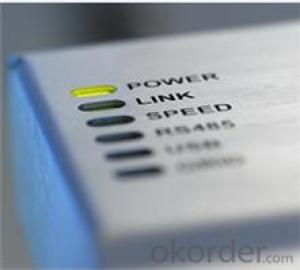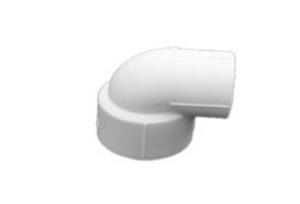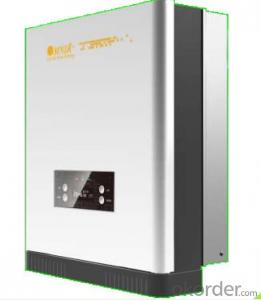On Grid Solar Inverter 3kw
On Grid Solar Inverter 3kw Related Searches
Led Light Bulbs For Ceiling Fixtures Led Lamps For Ceiling 42 In Ceiling Fan With Light Parts For Light Fixtures Light Projector For Christmas Grill With Led Light Bar Hanging Lights For Kitchen Bar Ceiling Lights For Sitting Room Ceiling Brackets For Lights Ceiling With Led LightsHot Searches
Aluminium Wire Mesh Manufacturers India Ceiling Fan Lowest Price Aluminium Scaffold Planks Sale Aluminium Walkway Mesh Prices Aluminum Bar Stock For Sale High Mast Light Price List Solar High Mast Light Specification High Mast Light Specification 6061 Aluminum Bar Stock Price Aluminum Bar Stock Price Stage Light Price Solar Inverter Fault Light Led Light Manufacturers Aluminum Round Bar Stock Sizes Aluminum Round Bar Stock Near Me Ceiling Fan Lowest Price Aluminum Flat Bar Stock Near Me Aluminum Bar Stock Sizes Aluminum Bar Stock Suppliers Aluminum Bar Stock Near MeOn Grid Solar Inverter 3kw Supplier & Manufacturer from China
Okorder.com is a professional On Grid Solar Inverter 3kw supplier & manufacturer, offers integrated one-stop services including real-time quoting and online cargo tracking. We are funded by CNBM Group, a Fortune 500 enterprise and the largest On Grid Solar Inverter 3kw firm in China.Hot Products
FAQ
- What is the difference between low voltage grid connection and medium voltage grid connection?
- For photovoltaic power plants when the power system accidents or disturbances caused by photovoltaic power plant grid voltage drop, in a certain voltage drop range and time interval, the photovoltaic power plant can ensure that non-off-line continuous operation.
- The different output waveforms of a solar inverter can vary depending on the type of inverter being used. The most common types include pure sine wave, modified sine wave, and square wave. Pure sine wave inverters produce an output waveform that closely resembles the standard AC power provided by utility companies, making them ideal for powering sensitive electronics. Modified sine wave inverters produce a stepped waveform that may not be as smooth as a pure sine wave, but can still power most household appliances. Square wave inverters produce a more basic waveform with abrupt transitions between positive and negative voltage, typically used for powering simple devices or tools.
- Yes, a solar inverter can be used with different types of energy storage systems. Solar inverters are typically designed to convert the direct current (DC) generated by solar panels into alternating current (AC) that can be used to power household appliances and other electrical devices. They can be integrated with various energy storage technologies such as batteries, supercapacitors, and flywheels to store excess energy generated by the solar panels for later use. The compatibility between the solar inverter and the energy storage system may depend on factors such as voltage requirements, capacity, and communication protocols.
- Overcurrent protection is of utmost importance in a solar inverter for several reasons. Firstly, solar inverters are responsible for converting the direct current (DC) generated by solar panels into alternating current (AC) that can be used to power electrical devices. During this conversion process, there is a risk of an overcurrent situation occurring, where the current flowing through the inverter exceeds its rated capacity. This can lead to overheating, damage to the inverter components, and even fire hazards. Secondly, overcurrent protection ensures the safety of the entire solar power system. By detecting and interrupting the flow of excessive current, it prevents damage to the solar panels, the inverter, and other connected electrical equipment. It also safeguards against electrical shocks and other potential hazards that could arise from an overcurrent situation. Furthermore, overcurrent protection plays a crucial role in maintaining the efficiency and performance of the solar inverter. When an overcurrent event occurs, the inverter can shut down or reduce its output to prevent further damage. This helps to avoid unnecessary downtime and ensures that the solar power system continues to operate at its optimum capacity. Moreover, overcurrent protection is essential for meeting regulatory and safety standards. Many countries and regions have specific guidelines and requirements regarding the installation and operation of solar power systems. Compliance with these standards is necessary to ensure the safety of personnel, protect the environment, and prevent any legal or financial liabilities. In conclusion, overcurrent protection in a solar inverter is critical for the safety, efficiency, and performance of the entire solar power system. It prevents damage to the inverter and other equipment, safeguards against hazards, and ensures compliance with regulatory standards. Therefore, it is essential to implement reliable and effective overcurrent protection mechanisms in solar inverters.
- A hybrid solar inverter works by converting the direct current (DC) electricity generated by solar panels into alternating current (AC) electricity that can be used to power appliances and equipment in a home or business. It also has the ability to store excess electricity in batteries for later use. Additionally, it can draw electricity from the grid when solar power is not sufficient, ensuring a continuous power supply. Overall, a hybrid solar inverter maximizes the use of solar energy and provides flexibility in managing electricity consumption.
- The operating temperature range of a solar inverter typically falls between -20°C to 50°C (-4°F to 122°F), although this can vary depending on the specific model and manufacturer.
- The role of a solar inverter in maintaining system stability is to convert the direct current (DC) electricity generated by solar panels into alternating current (AC) electricity that can be used in homes or fed back into the electrical grid. The inverter also ensures that the output voltage and frequency of the AC electricity are within acceptable limits, allowing for seamless integration with the existing power grid. By regulating and stabilizing the electricity flow, the solar inverter helps maintain the overall stability and reliability of the solar power system.
- Yes, a solar inverter can be used in a floating solar system. In fact, a solar inverter is an essential component of any solar power system, including floating solar systems. The purpose of a solar inverter is to convert the direct current (DC) electricity produced by the solar panels into alternating current (AC) electricity that can be used to power electrical appliances or be fed into the grid. Whether the solar panels are installed on the ground, on rooftops, or on a floating platform, a solar inverter is necessary to ensure the efficient and safe conversion of solar energy into usable electricity.












































